If you ask any golfer to name an iconic piece of equipment it's a safe bet it won't be long before they say the Ping Anser putter.
Designed in 1966 by Ping founder Karsten Solheim it is one of the most recognisable and enduring putters in golf with over 500 Ansers in the Ping Gold Putter vault, a treasure trove housing a gold plated model for each worldwide win.
To celebrate Ping has released two 50th anniversary Anser putters created from 3D scans of the original club.
During my visit to Ping headquarters in Arizona I was lucky enough to hear the story of the Anser putter from Ping CEO John Solheim.
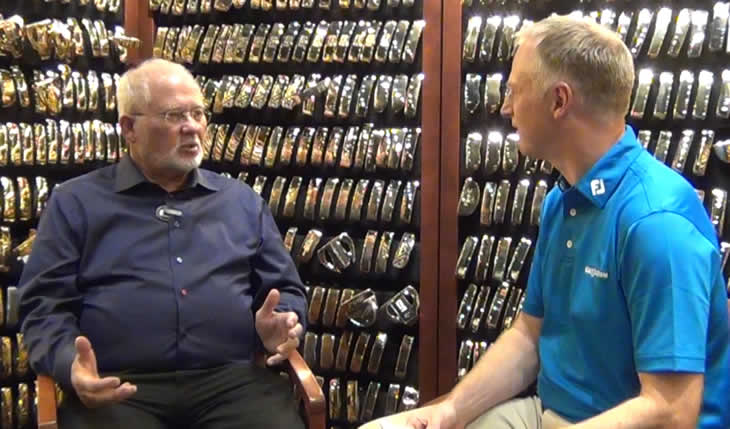
As the son of Karsten, John played a key part in the Anser story from the very beginning and this is his recollection of the early days of a golf club that would make history:
On The Anser Inspiration
"Back before the Anser we were starting to get rolling. The Cushin putter, both C and K, were doing pretty well on Tour and we had Jack Nicklaus using the C Cushin and Julius Boros using the C Cushin, they had slots in the bottom like the Anser later had.
"My Dad went to a tournament over in California, he was still working for General Electric, but he went to any tournament he could drive to and all of a sudden he saw this Palmer putter being used on Tour and he came home and said to my Mom that he needed an 'Answer' to the Palmer putter and that is when he started drawing the Anser putter on a record sleeve.

On The Anser Design
"My Dad worked with the engineers that did Lindbergh’s aeroplane. When he was doing that he saw that if an aeroplane had wing tipped tanks, when those tanks were full that plane was a lot more stable than when they were empty and he realised that moving the weighting to the extremes made a huge difference.

"That is what he put into the putter. He also thought about a tennis racket that was all totally perimeter weighted and as my Dad put it if you tried playing tennis with a ping pong bat you would have a lot of problem because of the fact that you would have no weight behind the ball if you don’t hit it perfectly.
On The Anser Name
"The putter was originally called the Answer, but that wouldn't fit on the small little pads at the back and back then we couldn't put names on like we can now. My Mother then said to my Dad take the ‘w’ out it will sound the same and it will fit. He said he didn't really care for the name but by the morning he hadn't figured out something better so he decided he liked it and he took it down to the engraver and had ‘Anser’ engraved on one end of the putter and ‘Ping’ on the other end.
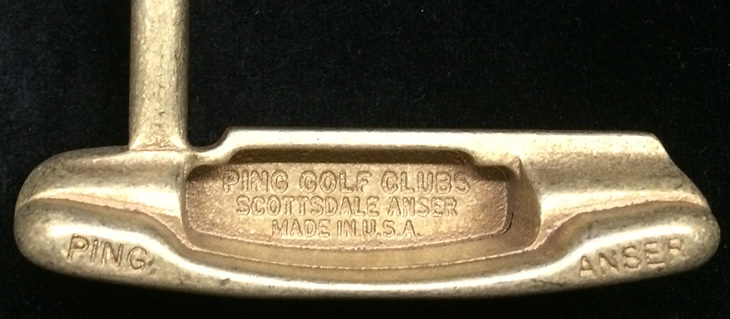
On The Anser Hosel
"The Anser had heel and toe weighting but it was different. It was more like K Cushin weights on the back of a longer putter and then where the hosel came from I don’t know. He always wanted to get the shaft ahead of the head so that you are pulling it through.
"His example to illustrate that was that if you take a wheelbarrow and try to go up a curve with it is pretty hard to get up that curve but if you pull it up it goes over the curve easily so that is why he wanted you pulling the putter through not pushing it. Plus if you are pulling it through and you bump something on the sole there is a lot less chance of it twisting.
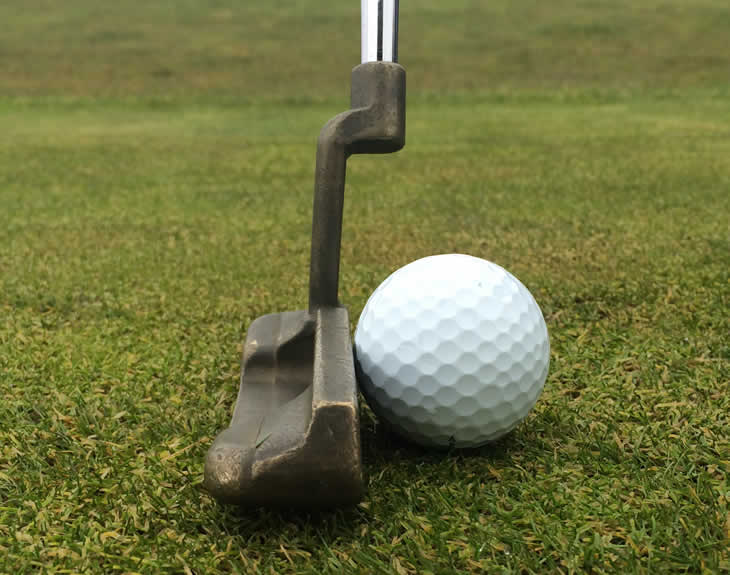
"For the Anser the hosel was the biggest difference because it forced you to get your hands ahead of the blade and pull the club through. Originally they called the hosel the plumbers’ nightmare!
"Our putters looked different but television didn't have the high resolution and colour back then, it was black and white and that hosel stood out on TV, so it made a difference because TV was getting bigger at the same time and people were seeing the funny looking hosel and were then looking for it to get one for themselves.
On The Anser Alignment
"The putter has extreme weighting at the heel and toe. You have a bar here and in the back of the club you have a bar as well so that gives you two parallel things to help you line up with and they complement each other and the cavity centres the ball and then it is amazing how the ball sets up behind the hosel - it just has so much to help you set up and line up. So besides the performance in getting the ball rolling and being so forgiving it is phenomenal at set up.
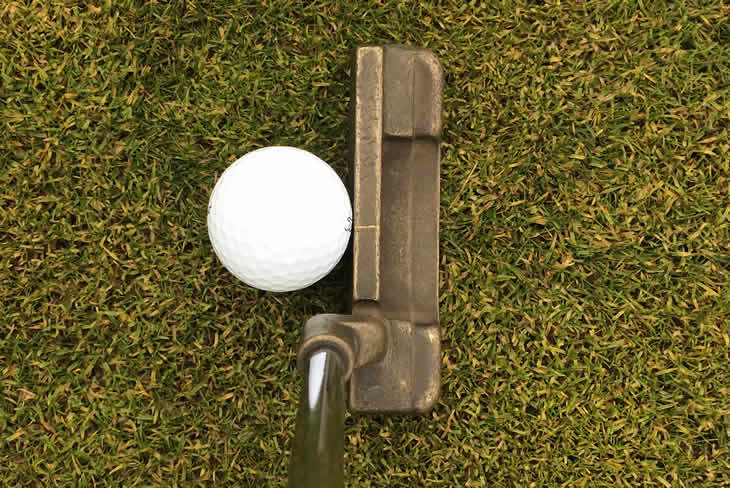
On The Anser Shaft
"The shaft that we used in the putters at that time basically was a True Temper iron shaft and we chose to use that as it was stiffer than the putter shafts they were selling back then and it was a much higher quality shaft than what most people used for putters.
On The Anser Weighting
"The weight was always very low and what Karsten was trying to do is that when you impact the ball he wants the weight to continue through, so the heavy mass is going to continue through, and the traction of the ball on the face is going to give it the over spin it needs to get rolling. Absolutely a phenomenal putter.
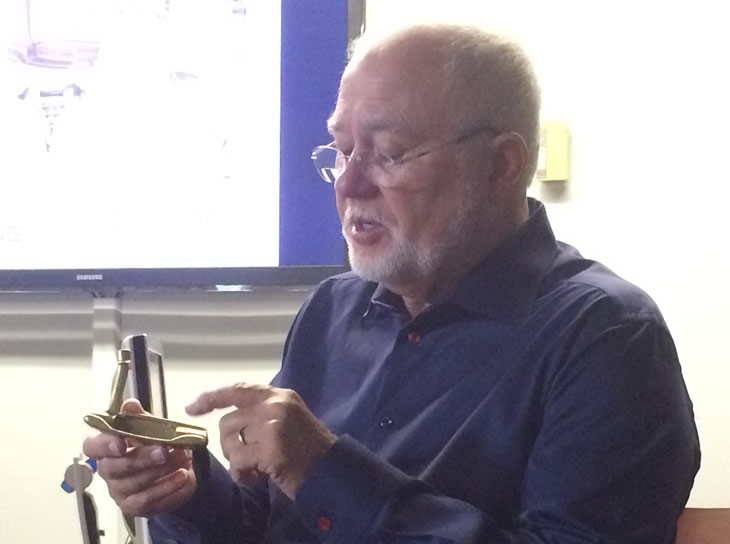
On Making The Anser
"At the age of 13 my first job on the 1A putter was to drill the hole for the shaft to go into the hosel, but it wasn’t that easy of a job because the hosel was mounted on a torsion bar that would move and the first ones didn’t really have a centre hole in, so I would have to put a centre hole in and drill it. I would use a fairly large screwdriver and put it into the side to eliminate the twisting because a drill always wants to wander one way or another so I had to do that to increase the consistency.
On How There Were Two Ansers
"For the Anser there were actually two moulds made, one by my brother Allan that had a little more rocker in the sole, and one by Karsten. My brother was working at GE with my Dad back then as a machinist. He was the one who did all the machining for the back cavity of our original irons.
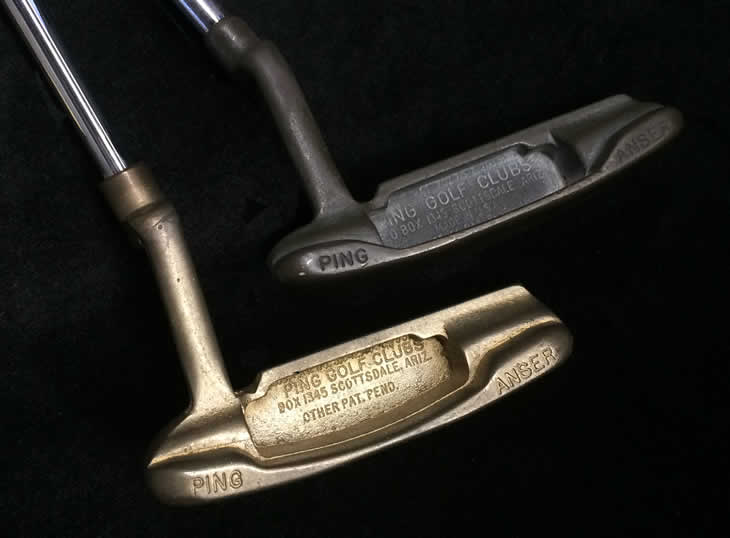
"Back then we never mentioned the difference between the two putters – maybe some of the Tour players picked which one they had, but that’s it – we shipped them both.
On Making Pocket Money Building Ansers
"We lived in Paradise Valley which is packed with homes and businesses. We lived at 37th Street and there were four paved roads when we moved out there and they built a grocery store at 37th Street and Shea and all my friends put in applications for jobs there so I put an application in too.
"Well, my Dad wasn’t very happy because I was helping in the shop and that was an interesting thing. My Dad liked to watch the news and my room was on the other side of the garage and there were windows between the garage and my room which the original owners had actually built to be a dog grooming room! I would get a rap on the window after I had gone to bed to tell me it was time for me to get up and help and this was a regular occurrence.
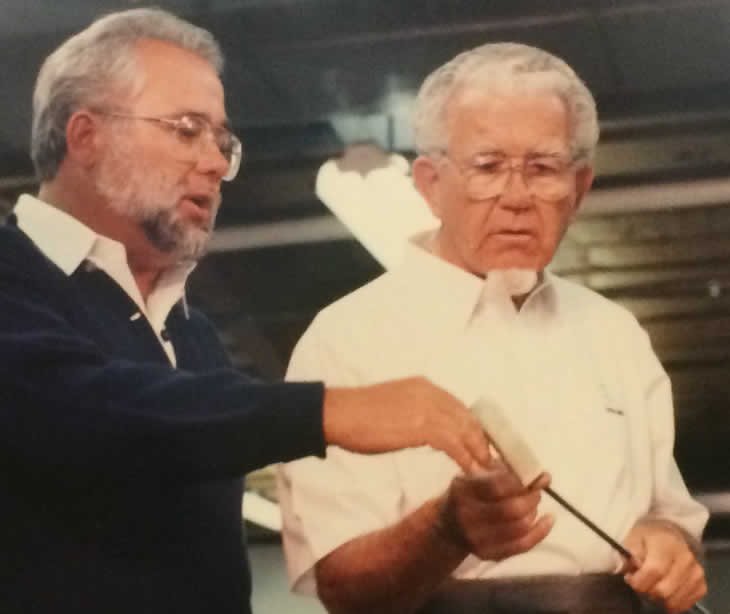
"After I had put that application in my Dad figured a way to pay me because before that I’d never got paid for the work that I was doing. Now I was never wanting for money – although I was forever asking for gas money and half of it would go in my pocket and half of it would go in the tank!
"So they set it up that I got $2.50 for every putter that I built, but if I needed help building the putters I had to pay the help myself so it was a good lesson for me because my Dad was teaching me about business. In that process I had to take raw casting to finished putter so I had to grind them and I had to finish them, put in the shaft and put the grip on. All of the Anser Scottsdale putters were pretty much built by me or by me and a couple of my friends.
On The Anser Getting Banned
"We started to produce the Anser. Back then we had bends in all of the shafts at the base of the grip. This bend forced the shaft to line up with the centre of the ball and this forced you to pull the putter through. Well, the USGA decided they didn’t like bends in the shaft using the croquet putters as examples of the problem.
"If you look at the croquet putters some of them were long, but some were short with bends in the shaft where you actually played the ball back behind your heels, so that led them to eliminating the bends. So in effect we were just getting rolling and they outlaw all of our golf clubs. All of a sudden our business, which was growing, went to zero.
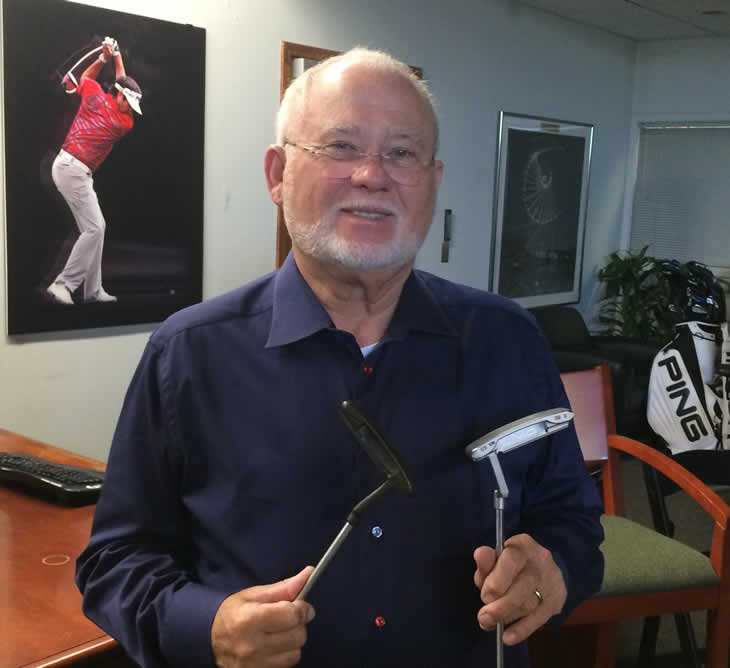
On Getting To Grips With The Rules
"The Anser, because of the hosel, didn’t have very much of a bend in so Karsten took the bend out of it and then took the Pro Only Golf Pride grip and took the core bar and we made a core bar that had a bend in it so that it moved forward. At the lower part it was where it was, but from that point the core bar had a bend in it and kept the distance between the front of the grip and the core bar the same all the way from the top where it used to be centred in the grip.
"This forced the grip to have an offset to it so it was behind the shaft, which in effect did the same as the bend especially when you included the offset of the hosel. A year after they made this rule our business was ten times what it had been with this grip. Now this grip is the same grip that Tiger plays today - it was really a huge development.

"The very early Anser putters had a pistol grip but that was something the USGA decided they didn’t want because of the curve it had on the back. It was interesting when they came out with the new standard of grips quite a few years later; basically the Ping putter grip was the standard, the maximum you could go with concavity in the grip. So many things just went right with this putter.
On The Anser Address: Scottsdale Or Phoenix?
"Karsten was very smart and he always put the address on every club so that people would know where to get the putter.
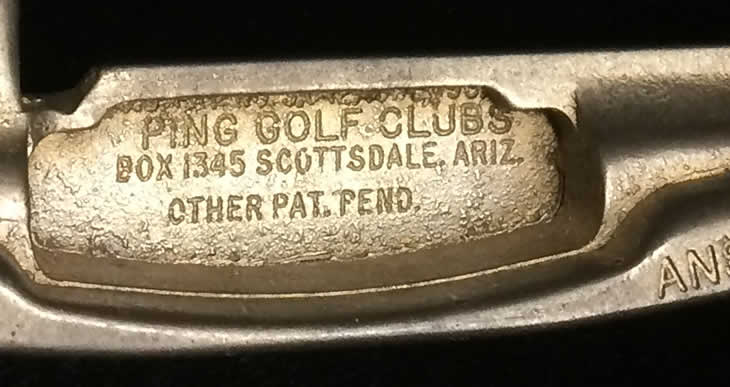
"The funny thing is we never lived in Scottsdale. We lived at 37th & Shea that was outside of Phoenix. One of the closest post offices was Scottsdale, but also our mail would be misdirected to Bullseye and Bullseye wouldn't re-direct our mail to us so they decided they wanted another address in Phoenix.
On Selling, Success And A Women's Touch
"Whatever tournament my Dad could drive to and not miss work he would go to. So he would go to San Diego, Los Angeles, Pebble Beach, Phoenix and Las Vegas. You've got to remember the roads weren't like they are today so it was a lot harder.
"He worked hard on it. When we took trips for family vacations if he saw a golf course on the road he stopped and with him that could be 2-3 hours. My Mum did some of that calling in on courses, but she only took 15 minutes as she sold as well as my Dad did.

"The first putters that we shipped overseas were to South Africa and my Mother was trying to figure out what we needed to do to ship overseas and she discovered that if you shipped things as gifts there were no taxes so the first two putters went as a gift to South Africa.
"Then she started working with a guy by the name of Don Fry at the US Bureau of Commerce who helped us a lot. She went to classes at Arizona State and was really the business side of things doing all the paperwork and billing. We talk about my Dad a lot and he worked at Convair, what is General Dynamics today, doing the ground mount for the tracking system for the Atlas missiles. But my mother also worked at Convair and she worked in the wind tunnel doing the calculations for the engineers. She’s a very smart lady and she’s 97 now.
"So by now the Anser is starting to roll. We have Gary Player playing it, Gene Littler playing it and also George Archer who was considered to be the best putter on Tour and George was 6 foot 6 inches so to be the best putter was amazing.
And from there the Anser went from strength to strength but who would believe that it would still be the dominant putter 50 years later on Tour – it is just absolutely amazing.
More From Ping